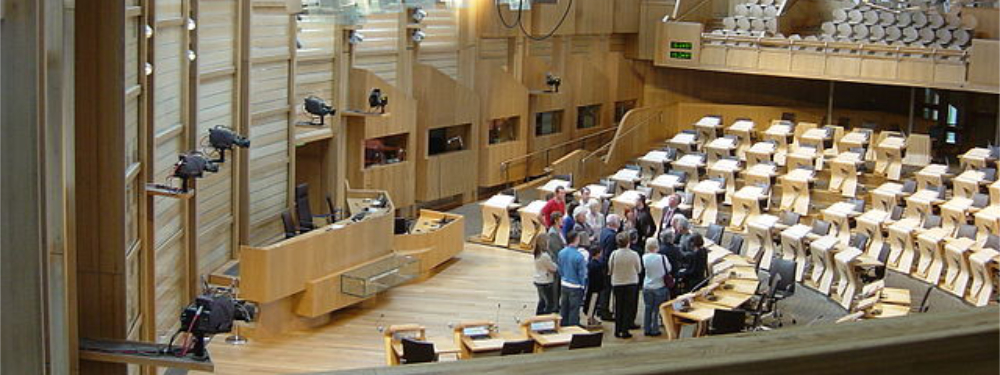Scottish government launch delivery plan for strengthening the planning system
Contents |
[edit] Delivery in waiting
The Scottish government has launched a delivery plan for strengthening the planning system to tackle the housing emergency. The plan acknowledges that “in Scotland, planning permission has been granted for many more homes than are currently being built”, with around 29,000 planning approvals, compared to 20,000 starts. It is estimates that planning permission exists for 164,000 homes which have yet to be delivered, including 114,000 in Glasgow and Edinburgh.
Despite the system’s apparent efficacy, this delivery plan seeks to further improve the capacity and efficiency of the planning system, with the aim of unlocking investment, tackling delays and better understanding blockers elsewhere in the system. The plan focusses on four priority objectives to be progressed “at pace” over the next six months, building on Scotland’s National Planning Framework 4 (NPF4), and its presumption in favour of sustainable development.
[edit] Building on Scotland’s NPF4
[edit] Policy
- Policy: a strong and consistent planning and policy framework for investment. Actions under this theme focus on ensuring policies are applied consistently and exploring where further policy change is needed (for example with guidance on flooding or community engagement).
[edit] Delivery
- Delivery: actively enabling and facilitating development. Actions under this theme focus on areas where direct intervention could drive development, including establishing a Housing Planning Hub to provide brokerage support for major housing developments which have stalled in the system, and supporting planning authorities to develop pipelines of land for development
[edit] Efficiency
- Efficiency: an end-to-end approach to improving the efficiency of the system. Actions under this theme seek to streamline planning processes, for example through standardising planning conditions and section 75 agreements and exploring expansions in permitted development rights. It also includes halting the introduction of an infrastructure levy, based on feedback that this could add significant complexity to the system whilst offering limited benefits in return.
[edit] Capacity
- Capacity: investing in capacity with access to excellent professional skills and expertise. Actions under this theme include more support for planning careers and expanded departmental funding through higher planning fees.
While these actions have potential to strengthen Scotland's planning system, it is disappointing that no consideration appears to have been given as to how the planning system can better encourage built out after permission is granted (for example through “use it or loose it” permissions, or fees to maintain permissions prior to work starting).
Additionally, the focus on the planning system appears to ignore where the majority of the issues in Scottland’s housing delivery pipeline are – namely, between planning permission and completion. It is to be hoped that this is only the first phase of the Scottish Government’s work to address the housing crisis, with additional work plans to follow.
This article appears on the CIAT news and blog site as "Scottish government delivery plan to strengthen planning system" dated 20 November, 2024.
--CIAT
[edit] Related articles on Designing Buildings
- Achieving net zero in social housing.
- Assignation.
- Building safety in Wales.
- Devolution.
- Drying room - Scotland.
- National Planning Framework.
- National planning policy framework.
- Placemaking.
- Planning permission.
- Planning (Wales) Bill.
- Scotland publishes plans to reach net zero targets with Heat in Buildings Strategy.
- Scotland reaches homebuilding milestone in 2021.
- Scottish building standards.
- Scottish Government urged to review infrastructure.
- Scottish housing standard.
- Scottish planning and architecture documents.
- Scottish planning policy.
- The future infrastructure of Scotland.
- Water Industry (Scotland) Act 2002.
Featured articles and news
International Electrician Day, 10 June 2025
Celebrating the role of electrical engineers from André-Marie Amperè, today and for the future.
New guide for clients launched at Houses of Parliament
'There has never been a more important time for clients to step up and ...ask the right questions'
The impact of recycled slate tiles
Innovation across the decades.
EPC changes for existing buildings
Changes and their context as the new RdSAP methodology comes into use from 15 June.
Skills England publishes Sector skills needs assessments
Priority areas relating to the built environment highlighted and described in brief.
BSRIA HVAC Market Watch - May 2025 Edition
Heat Pump Market Outlook: Policy, Performance & Refrigerant Trends for 2025–2028.
Committing to EDI in construction with CIOB
Built Environment professional bodies deepen commitment to EDI with two new signatories: CIAT and CICES.
Government Grenfell progress report at a glance
Line by line recomendation overview, with links to more details.
An engaging and lively review of his professional life.
Sustainable heating for listed buildings
A problem that needs to be approached intelligently.
50th Golden anniversary ECA Edmundson apprentice award
Deadline for entries has been extended to Friday 27 June, so don't miss out!
CIAT at the London Festival of Architecture
Designing for Everyone: Breaking Barriers in Inclusive Architecture.
Mixed reactions to apprenticeship and skills reform 2025
A 'welcome shift' for some and a 'backwards step' for others.
Licensing construction in the UK
As the latest report and proposal to licence builders reaches Parliament.
Building Safety Alliance golden thread guidance
Extensive excel checklist of information with guidance document freely accessible.
Fair Payment Code and other payment initiatives
For fair and late payments, need to work together to add value.
Pre-planning delivery programmes and delay penalties
Proposed for housebuilders in government reform: Speeding Up Build Out.
High street health: converting a building for healthcare uses
The benefits of health centres acting as new anchor sites in the high street.


























